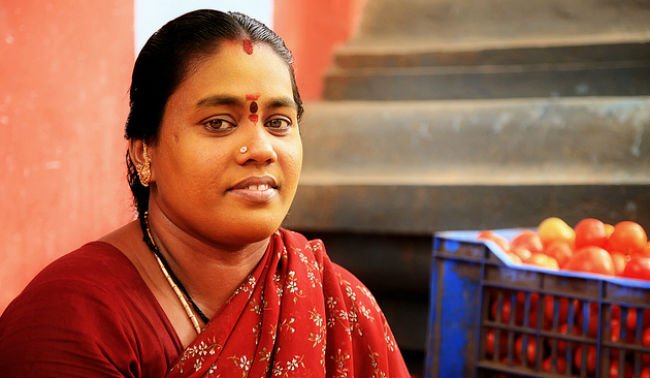Ashwini Raut leads a healthy, happy life right now—she flies through her daily routine in her hometown in rural Maharashtra, India, will soon be getting married, and is planning for a family. But it was only recently that she learned her long-term health was at risk. The soil of the land Raut, 25, lives on is scarce in iodine, a key trace element required by the human body. If she doesn’t supplement her diet, she’ll be susceptible to iodine deficiency disorders, which could lead to hypothyroidism, goiter, breast cancer, and even brain damage. Her children could be born with cretinism or developmental disabilities.
Raut is far from alone. The entire Indian subcontinent is known to have iodine-deficient soil, making Indians highly susceptible to IDD, the single largest cause of preventable brain damage across the globe, according to the Indian Journal of Medical Research. The harm IDD causes can be permanent, but it’s also easily preventable with a daily dosage of 150–200 micrograms of iodine. The simplest way to consume the required amount is through iodized salt. While studies reveal that iodized salt reaches about 91 percent of Indian households, only 71 percent consume it at the recommended level, leaving an estimated 350 million people throughout the country at risk of IDD, the journal says. Those in remote, rural areas are especially vulnerable.
Enter Grey for Good, the philanthropic arm of Singapore-based direct marketing and advertising firm Grey Group, which developed a novel idea to address the problem of iodine deficiency in India’s rural areas. Because many Indian women wear a bindi—a beauty accessory in the shape of a small dot worn in the center of the forehead—the organization decided to create iodine-coated bindis that could act as a daily supplement if worn for at least four hours.
In collaboration with Indian NGO Neelvasant Medical Foundation and Research Center, the group launched a trial campaign in Delhi and rural Maharashtra in March to distribute individual packets of 30 coated bindis to more than 30,000 women, including those in Raut’s community.

Each bindi is coated with about 150–200 micrograms of iodine that is absorbed through the skin. The effectivenesss varies among individuals and depends on factors such as skin thickness and perspiration level. On average, users absorb about 12 percent of their daily requirement from the bindi, according to Prachi Pawar, president of the Neelvasant Medical Foundation and Research Center and an ophthalmologist, who adds that there are no side effects.
Key to the project is not only distributing the bindis but driving home the importance of lifestyle changes that support sufficient iodine intake overall—including cooking with iodized salt—through various awareness campaigns.
“Most families in rural Maharashtra use un-iodized crystal salt to preserve food,” says Pawar. She explains that many use the same salt for cooking because it is widely available. “We were curious why they didn’t buy iodized salt from grocery shops for consumption, but when we asked, families didn’t have a reason. They were just unaware of its importance.”
While IDD affects men as well, Pawar wanted to specifically target women first. “Women are the cornerstone of every household, so once they are convinced of something, they can influence the entire family,” she says. “Another important factor is that during pregnancy, women need almost a double dose of iodine, so if they are covered, a lot of newborns could be saved from health damage.”
The second phase of the “Life Saving Dot” campaign is slated to roll out in the next few months, which will make the coated bindis available to even more women. Grey for Good confirms that the project will target other parts of rural India, in collaboration with a number of Indian NGOs that have contacted it about partnerships in the past month.
Raut and many other women are looking forward to receiving more bindis. “They now understand it is easy to take care of at least one aspect of their health,” Pawar says.
Contributed by Priti Salian, a Bangalore-based journalist whose work has appeared in The Christian Science Monitor,Prevention, The National, and many other publications.